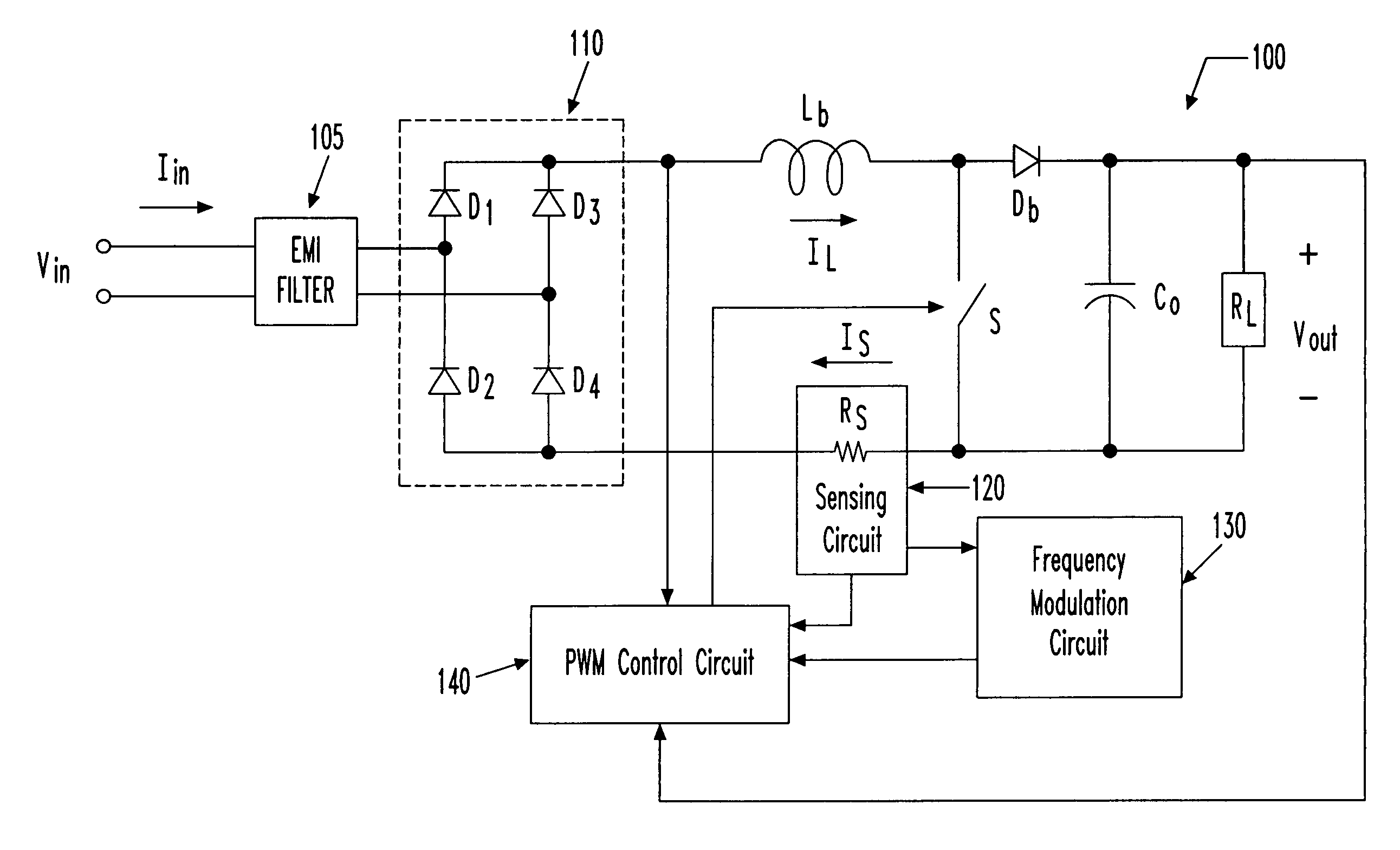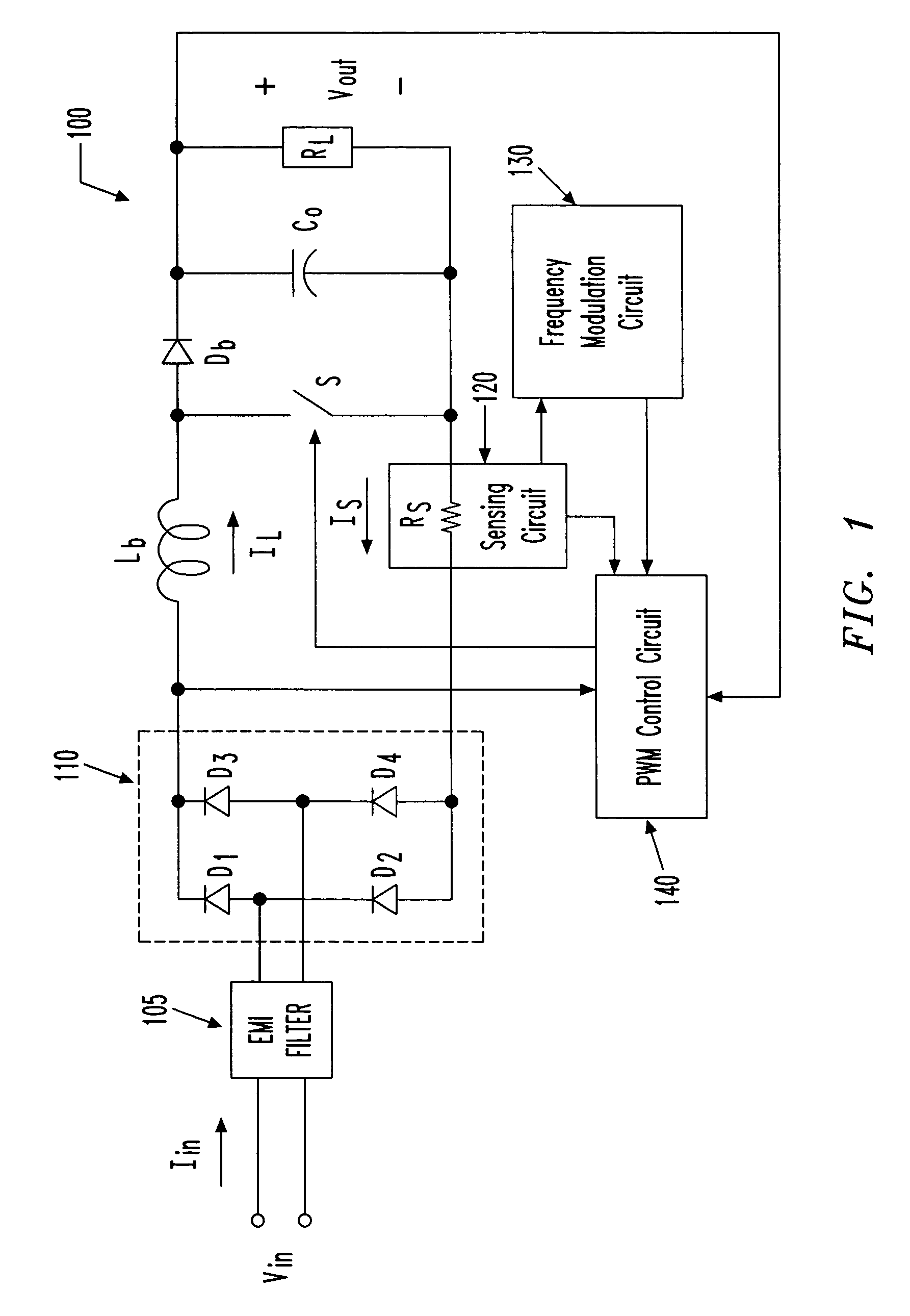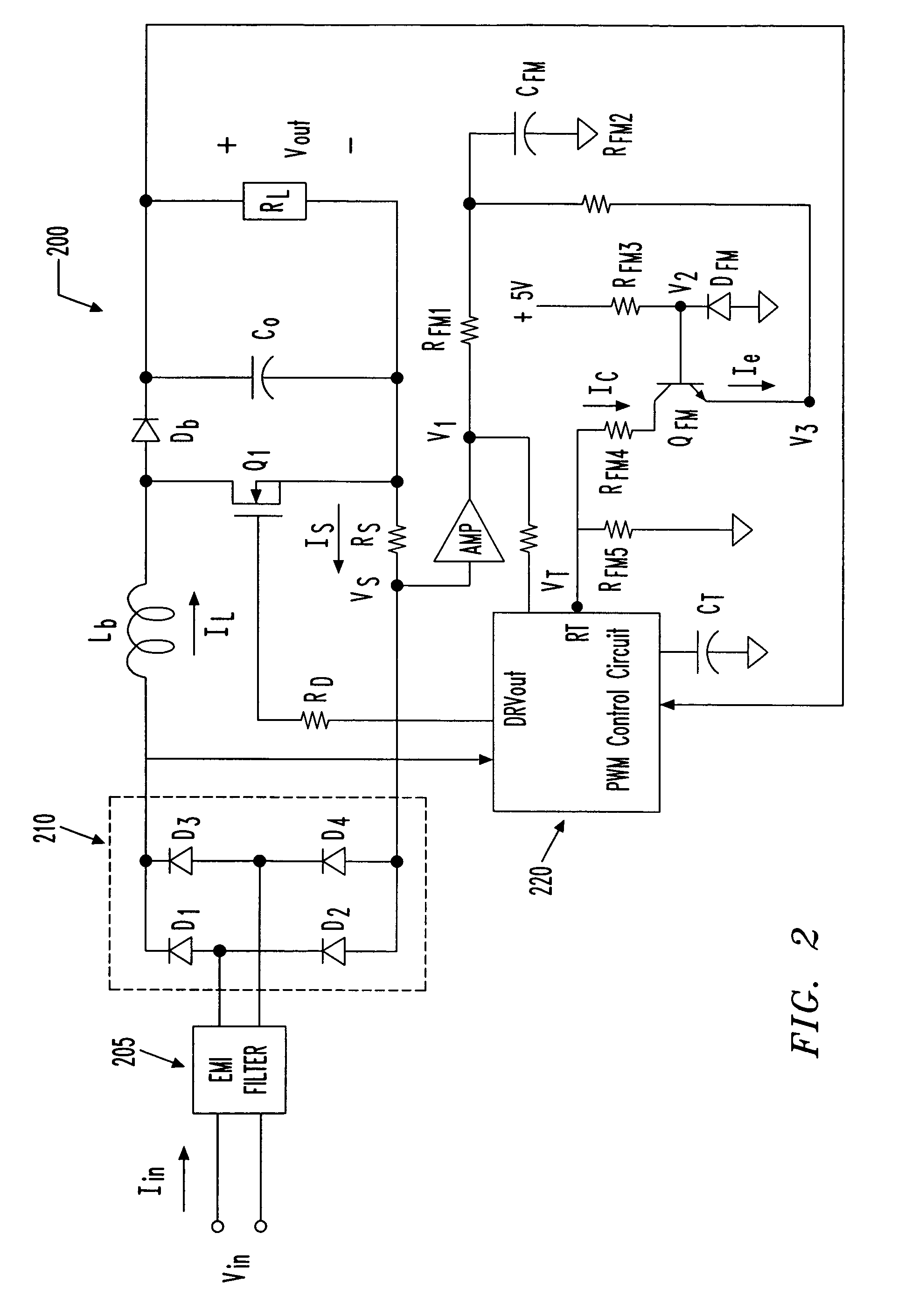Controller for a power factor corrector and method of regulating the power factor corrector
a technology of power factor corrector and controller, which is applied in the field of power electronics, can solve the problems of contributing to electromagnetic interference noise, rectifier bridge subject to dissipative losses, and conventional boost converters cannot directly process the ac power available from the ac lin
- Summary
- Abstract
- Description
- Claims
- Application Information
AI Technical Summary
Benefits of technology
Problems solved by technology
Method used
Image
Examples
Embodiment Construction
[0018]Referring initially to FIG. 1, illustrated is a schematic diagram of an embodiment of a current-controlled frequency-modulated power factor corrector (also referred to as a power factor corrector) 100 constructed according to the principles of the present invention. The power factor corrector 100 has an input couplable to an AC source (not shown) having an input voltage Vin and supplying an input current Iin. The power factor corrector 100 provides an output voltage Vout at an output thereof. The power factor corrector 100 includes an electromagnetic interference (also referred to as “EMI”) filter 105 and a rectifier 110 having first, second, third and fourth diodes D1, D2, D3, D4.
[0019]The power factor corrector 100 employs a boost converter topology having a boost inductor Lb (with a boost inductor current IL passing therethrough), a power switch S, a boost diode Db and an output capacitor Co. A characteristic of the boost converter topology is that the output voltage Vout i...
PUM
 Login to View More
Login to View More Abstract
Description
Claims
Application Information
 Login to View More
Login to View More - R&D
- Intellectual Property
- Life Sciences
- Materials
- Tech Scout
- Unparalleled Data Quality
- Higher Quality Content
- 60% Fewer Hallucinations
Browse by: Latest US Patents, China's latest patents, Technical Efficacy Thesaurus, Application Domain, Technology Topic, Popular Technical Reports.
© 2025 PatSnap. All rights reserved.Legal|Privacy policy|Modern Slavery Act Transparency Statement|Sitemap|About US| Contact US: help@patsnap.com



